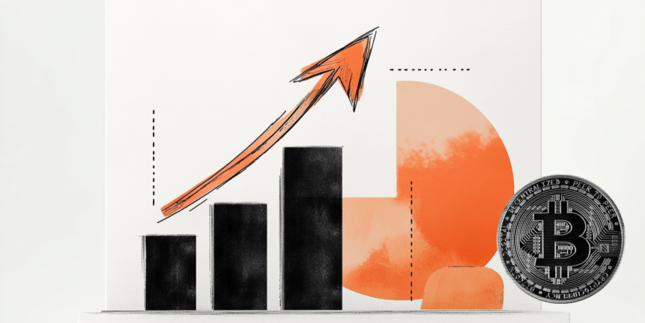As fear is running exceptionally high, irrational decisions are easily made. However, over 100 years of stock market history demonstrate that any Bear market is a Major Buying Opportunity (BIMBO) for those who can look beyond today and tomorrow. This time, it will be no different, as analyzing the stock market’s price charts provides an objective understanding of their condition. In our previous update from March 19, we found by using the Elliott Wave (EW) for the NASDAQ100 (NDX) that
“… [There is also] the potential for a bounce to $20800 ± 400, followed by a final leg lower (red W-c) to ideally $17800 ± 400. Thus, we prefer to look higher, contingent on holding above last week's low.”
The index reached a peak of $20,292 on March 25. Then its fast-moving C-Wave kicked in as a reaction to the Trump Administration’s tariff announcement on April 2nd. The index reached as low as $16,542 yesterday. Thus, the “bounce-and-drop” option became the preferred scenario. The bounce target zone was missed by only 0.5%, while the ideal downside target was exceeded by ~5% so far due to what we refer to as an extended 5th wave. Extensions of waves can always happen but cannot be known beforehand. Hence, we must start with the ideal Fibonacci-based impulse pattern, and when it is invalidated, we apply, in this case, an extended pattern. Therefore, “all we can do is anticipate, monitor, and adjust, if necessary.” See figure 1 below.
NDX daily chart with detailed Elliott Wave count and technical indicators
Since C-waves comprise five waves, last Monday’s low and Wednesday’s high were (green) Wave-1 and W-2, respectively. Thus, the green W-3 has bottomed, and all that’s left are the green W-4 and W-5, contingent on the NDX staying below last Wednesday’s high at $19,707. A severe warning for the Bears occurs above $18,799.
This brings us to the next issue. As we pointed out in our last update,
“even if the index would reach the 61.8% extension at ~$16,600, the Bull case would still be alive, albeit put under pressure as, in that case, the 5th wave can still reach the 161.8% extension at ~$26,500 to complete an enormous ending diagonal [ED] 5th wave from the March 2020 low.
In an ED, the 3rd wave often reaches the 1.236x Fibonacci (Fib) extension of W-1, measured from W-2. The subsequence fourth wave bottoms out at around 50-76.4%, with the 61.8% ideal. The final 5th wave then typically targets the 138.2-176.4% Fibonacci extension, with the 1.618x W-1 extension preferably. See Figure 2 below.
NDX daily chart with detailed Elliott Wave count and technical indicators
The NDX peaked at $22,222 in February, which is ~2.4% below the ideal 123.60% Fibonacci extension at $22,768 and thus within range. Moreover, so far, the index has bottomed out at $16,542, while the aforementioned (green) W-4, W-5 sequence targets ideally the low $16,000s, which is still within the margins of error of around $16,600. Thus, once these two smaller waves are complete, we can look forward to two scenarios
-
A direct rally to new All-Time Highs for the black W-5 (green arrow in Figures 1 and 2), or.
-
A bounce to $20,000+/-1000 before the next leg lower to ~$15,400 kicks in (orange arrows in Figures 1 and 2).
In short, after three waves lower (the red W-a, -b, and -c), expect at least three waves back up. Namely, financial markets are stochastic and probabilistic, i.e., they follow if-then scenarios, and thus, those who seek certainty will never stop searching; we cannot yet be sure which path the index will take. We do know, however, that a break below the 50% retracement level at $15,430 will be a serious indication the index has put in a much larger top, but we’ll share that in a later update if necessary. For now, we focus on the index wrapping up these smaller 4th and 5th waves, which will be followed by a rally of at least 15-25%.
The analysis is derived from data believed to be accurate, but such accuracy or completeness cannot be guaranteed. It should not be assumed that such analysis, past or future, will be profitable, equal past performance, or guarantee future performance or trends. All trading and investment decisions are the sole responsibility of the reader. The inclusion of information about positions and other information is not intended to be any type of recommendation or solicitation.
Recommended content
Editors’ Picks

Gold retains solid gains after reaching fresh record highs Premium
Gold price hit yet another record high on Monday, as the US Dollar sell-off continued on the back of US President Donald Trump’s criticism of Federal Reserve Chair Jerome Powell, fueling concerns about the future of the US economy.

AUD/USD eases from fresh 2025 highs, holds above 0.6400 Premium
The Australian Dollar surged against its American rival to a fresh yearly high of 0.6437. The poor performance of Wall Street pushed AUD/USD lower ahead of the daily close, but broad USD weakness is likely to keep Aussie on the winning side.

EUR/USD hovers above 1.1500 as investors drop the USD
The EUR/USD pair traded as high as 1.1574 on Monday, retreating from the over three-year high as fears cooled in the American session. Still, Wall Street edged sharply lower amid concerns about the Federal Reserve's autonomy.

Bitcoin traders celebrate 3.125 BTC halving anniversary with $90K price prediction
Bitcoin price surges past $88,000 on Monday as traders mark the 3.125 BTC halving anniversary amid a rapid shift in investor focus away from USD-based investments.

Five fundamentals for the week: Traders confront the trade war, important surveys, key Fed speech Premium
Will the US strike a trade deal with Japan? That would be positive progress. However, recent developments are not that positive, and there's only one certainty: headlines will dominate markets. Fresh US economic data is also of interest.

The Best brokers to trade EUR/USD
SPONSORED Discover the top brokers for trading EUR/USD in 2025. Our list features brokers with competitive spreads, fast execution, and powerful platforms. Whether you're a beginner or an expert, find the right partner to navigate the dynamic Forex market.





